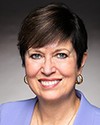I think it could be a matter of levelling out their knowledge around digital literacy and digital gender issues.
Sometimes when I go into an area with at-risk youth and they have good education and are really aware, it's amazing what their perspectives are and their position is. There's no difference if you provide access to high-quality education and you have adults who can guide, help, and mentor people from any walk of life.
Sometimes I go into an at-risk situation with youth who are not in school, who have dropped out, who are not employed. I go into a community centre, and the community centre facilitator will tell me that the kids are very engaged and very savvy. They're online, and they're doing three things. They're Facebooking, playing video games, and downloading porn.
That's not savvy in the same way as when you go into a school with good, strong digital literacy education where teachers are teaching young people to access all kinds of information, to evaluate it critically, and to use all kinds of technology in different ways.
I think that's where we see a big cultural divide, and it's going to get bigger and more emerging, I would guess.




